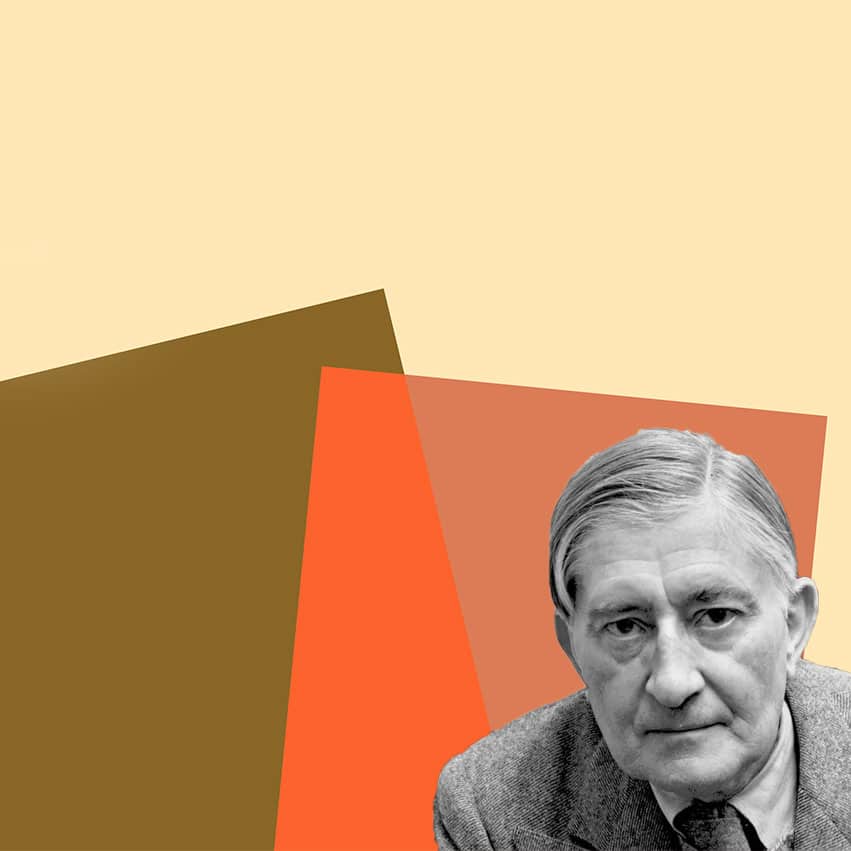Design
23 Aug The ‘Feeling Value’ of Line and Type
[vc_row css_animation="" row_type="row" use_row_as_full_screen_section="no" type="full_width" angled_section="no" text_align="left" background_image_as_pattern="without_pattern" el_class="blog-new-hagan" z_index=""][vc_column width="1/4"][/vc_column][vc_column width="1/2"][vc_column_text]Often underestimated is our sensitivity to the visual world around us. We can often underpin when something is exciting or awe-inspiring – from a gun-wielding maniac (fear) to a mountain backed by a starry sky (awe), though it's our subtlest emotional responses from the seemingly small which affect us at every moment, making up the majority of our days and the bulk of our common interactions…23 Apr Spotlight: Josef Albers (Interactions of Color)
[vc_row css_animation="" row_type="row" use_row_as_full_screen_section="no" type="full_width" angled_section="no" text_align="left" background_image_as_pattern="without_pattern" z_index="" el_class="blog-new-hagan"][vc_column width="1/4"][/vc_column][vc_column width="1/2"][vc_column_text] Early this year, in hopes of strengthening my weakness for colour, I went to the highly influential book 'Interactions of Color' by artist and educator Josef Albers. The book, despite its heady and annoying unnecessary academic tone (which I disdain so much), instils a child-like curiosity to experiment, play, and all in all, have fun with colours. The main takeaway from the book is how colour, much like musical notes, has a perceptible change with their combinations, like how one note on a piano would not be considered music, but play two notes, and it's a different world entirely.13 Feb Spotlight: Josef Müller-Brockmann
[vc_row css_animation="" row_type="row" use_row_as_full_screen_section="no" type="full_width" angled_section="no" text_align="left" background_image_as_pattern="without_pattern" el_class="blog-new-hagan" z_index=""][vc_column width="1/4"][/vc_column][vc_column width="1/2"][vc_column_text]I'll admit it, at first, I rejected the grid. The idea of putting what seemed like restrictions on an exciting new idea made me feel as though it would disrupt the fluidity to any creative process and could comprimise any such workflow. Now, I realise, I was just plain wrong. Today I yodel praise from mountaintops of the grid and its forefathers of Swiss design – Perhaps there's some latent Swiss in my genealogy, I don't know, but I'm a believer.05 Feb Composition
[vc_row css_animation="" row_type="row" use_row_as_full_screen_section="no" type="full_width" angled_section="no" text_align="left" background_image_as_pattern="without_pattern"][vc_column width="1/4"][/vc_column][vc_column width="1/2"][vc_column_text]When we compose, we organise. Whether we want it to look chaotic or minimally peaceful, if it achieves what it's set out to do, the composition is achieved. I see composing much like the work of the conductor...
23 Jan Leading Social Change With Design
[vc_row css_animation="" row_type="row" use_row_as_full_screen_section="no" type="full_width" angled_section="no" text_align="left" background_image_as_pattern="without_pattern"][vc_column width="1/4"][/vc_column][vc_column width="1/2"][vc_column_text]From the Constructivist movement in early 20th century Russia to the more recent happenings in Poland with this design clenched in protester's fists, design has been used again and again to provoke social change and extend political stances...
15 Jan Spotlight: Alexey Brodovitch
[vc_row css_animation="" row_type="row" use_row_as_full_screen_section="no" type="full_width" angled_section="no" text_align="left" background_image_as_pattern="without_pattern" el_class="blog-new-hagan" z_index=""][vc_column width="1/4"][/vc_column][vc_column width="1/2"][vc_column_text]Wide open white spaces and turning dynamic figures that dance off the page, Alexey Brodovich was known as a bold innovator and a giant in the world of editorial design; helping bring a European edge of art and design into American media which we can still see the influence of today on not just print publications but on websites also. His most public and influencing work came from 1934 to 1958 working as art director for Harper's Bazaar.08 Jan Using The Line
[vc_row css_animation="" row_type="row" use_row_as_full_screen_section="no" type="full_width" angled_section="no" text_align="left" background_image_as_pattern="without_pattern"][vc_column width="1/4"][/vc_column][vc_column width="1/2"][vc_column_text]A long narrow mark that divides, directs, adds dimension, creates momentum, tension, or tranquillity, can be used to communicate everything from emotion to information. A line is an everyday tool of design and like maneuvering girders...
30 Dec Spotlight: Ivan Chermayeff
[vc_row css_animation="" row_type="row" use_row_as_full_screen_section="no" type="full_width" angled_section="no" text_align="left" background_image_as_pattern="without_pattern" el_class="blog-new-hagan" z_index=""][vc_column width="1/4"][/vc_column][vc_column width="1/2"][vc_column_text]Ivan Chermayeff, known for his graphic work and enduring logo identities is one of the premier designers of modern design. Partner of Chermayeff & Geismar & Haviv, a design firm which helped pave the way into the more modern sleeker corporate logos we see today, Ivan Chermayeff played a pivotal role in how logo identities are communicated.21 Dec Judging A Book By Its Cover
[vc_row css_animation="" row_type="row" use_row_as_full_screen_section="no" type="full_width" angled_section="no" text_align="left" background_image_as_pattern="without_pattern"][vc_column width="1/4"][/vc_column][vc_column width="1/2"][vc_column_text]On the left side of my desk, I stack my “quake books”. These are books that have fundamentally changed me in some way; shaken the foundations of who I am and helped me on some sort...









